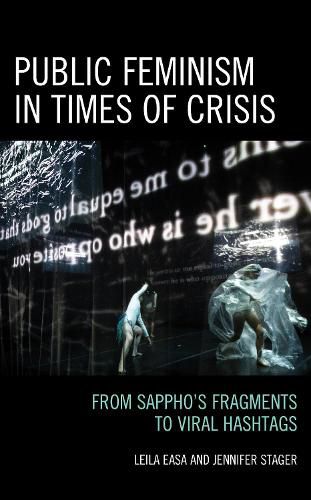Readings Newsletter
Become a Readings Member to make your shopping experience even easier.
Sign in or sign up for free!
You’re not far away from qualifying for FREE standard shipping within Australia
You’ve qualified for FREE standard shipping within Australia
The cart is loading…






Public Feminism in Times of Crisis examines the public practice of feminism in the age of social media. While their concept of public feminism emerges from a moment of acute crisis (the Trump years and the Covid-19 pandemic), Leila Easa and Jennifer Stager locate its foundations in history, journeying through broad swatches of time looking for connections between the centuries through art and literature and culture. Each chapter focuses on what public feminists do in the world: Public feminists gain control over an archive that otherwise contains or excludes them; they recover their own stories and subjective experiences, sometimes for activist use; they examine images and language that construct women in patriarchal texts; they situate the individual within a collective and the collective within an individual; they confront the limitations of such situating due to the containment of patriarchy and reclaim new systems of power in response; and they resurface a deep history for the alternative strategies of memorializing they employ. In navigating these practices, the authors also attend to the material conditions of writing histories as well as those shaping and enabling public feminist acts and protests more broadly.
$9.00 standard shipping within Australia
FREE standard shipping within Australia for orders over $100.00
Express & International shipping calculated at checkout
Public Feminism in Times of Crisis examines the public practice of feminism in the age of social media. While their concept of public feminism emerges from a moment of acute crisis (the Trump years and the Covid-19 pandemic), Leila Easa and Jennifer Stager locate its foundations in history, journeying through broad swatches of time looking for connections between the centuries through art and literature and culture. Each chapter focuses on what public feminists do in the world: Public feminists gain control over an archive that otherwise contains or excludes them; they recover their own stories and subjective experiences, sometimes for activist use; they examine images and language that construct women in patriarchal texts; they situate the individual within a collective and the collective within an individual; they confront the limitations of such situating due to the containment of patriarchy and reclaim new systems of power in response; and they resurface a deep history for the alternative strategies of memorializing they employ. In navigating these practices, the authors also attend to the material conditions of writing histories as well as those shaping and enabling public feminist acts and protests more broadly.